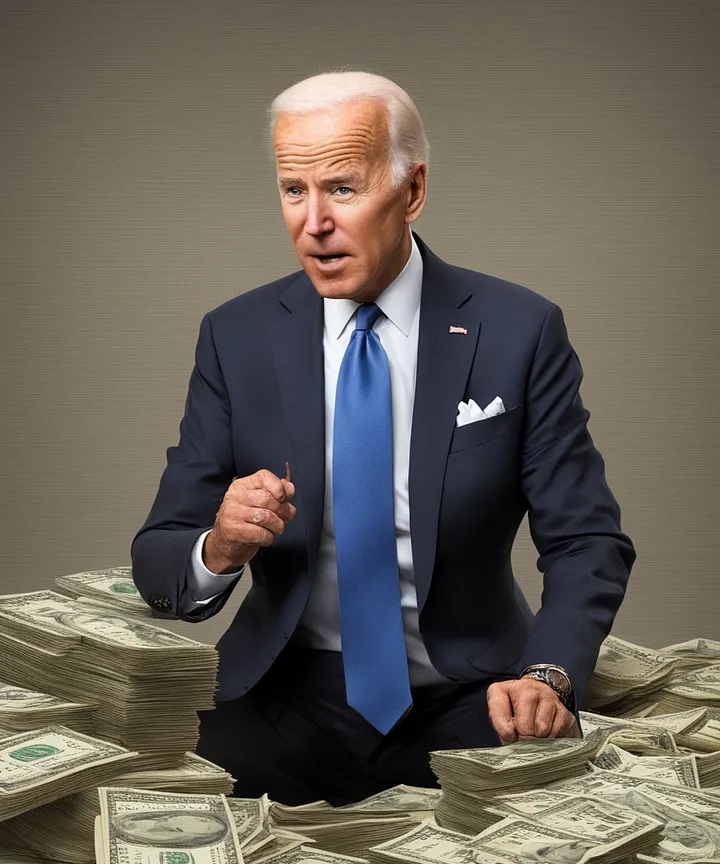Stocks Get Slammed on Bad Economic News, Gold Remains Buoyant
As the national debt soars to yet another new milestone, gold prices are ascending toward a new record of their own.
The official debt held by the public has just ticked past the $35 trillion mark. Of course, with all the billions and trillions being spent by the government on various projects using money it doesn’t have — and the tens of trillions more in unfunded entitlement commitments — it can be difficult to keep track of just how much spending is taking place.
Joe Biden: There’s a situation where there’s an estimation of somewhere between 700 billion and a trillion, 300 million, billion dollars.
John Dickerson (CBS News): There was once a time, not that long ago, when the size of the national debt dominated political conversation. In 1992, when Ross Perot ran for president on that issue alone, the debt was about $4 trillion. It has now surpassed $35 trillion. It hit that number for the first time on Monday, and equates to over $104,000 per person. Financial hole is mounting quicker than most economists had predicted, that’s because the money spent on federal programs recently has gone over their initial projections.
Joe Biden: Over a billion, 300 million, trillion, $300 million.
Yes, numbers so high some people can’t even seem to spit them out.
We’ve heard talk from President Joe Biden about how he is supposedly reducing the budget deficit. Politicians may lie, but the numbers don’t.
In the last year alone, the Biden administration has added an astounding three and a half trillion dollars to the national debt. So far this year, interest payments alone on the nation’s line of credit have exceeded $900 billion. That’s more than the United States spends on national defense.
Many Republican members of Congress decry the Biden administration’s spending record. But they aren’t entirely credible on the issue of fiscal responsibility, either. Most Republicans routinely vote for budgets that expand rather than reduce federal deficit spending.
Congress ultimately has the power of the purse. And only a small handful of politicians are willing to actually vote to cut government outlays.
Substantive discussions of how to tackle the debt have been virtually absent from the Democrat and Republican presidential campaigns. Kamala Harris is stuck having to defend incumbent Joe Biden’s spending record. And let’s not forget that the debt also ballooned under the presidency of Donald Trump.
Trump wants to grow the economy faster than the rate of debt growth. Were he to return to the White House, he’d also likely try to talk interest rates down to reduce the government’s servicing costs.

But the President of the United States cannot simply order an increase in GDP — let alone one massive enough to reduce the relative debt burden. Nor can he simply refinance the $35 trillion debt at a lower rate.
Trump can publicly berate the Federal Reserve chairman for keeping interest rates too high. But the reality is that for most of its existence, the Fed has artificially suppressed interest rates. Artificially low rates, in turn, encourage consumers, businesses, and governments to take on excessive leverage — making the debt problem even worse.
The Fed is widely expected to begin cutting its benchmark Funds rate in September. Recent economic data showing rising jobless claims and declining manufacturing output are bolstering the doves at the central bank and raising recession concerns. Rising loan delinquencies and defaults are also raising alarms about the health and stability of the banking sector.
Meanwhile, the relentless stock market rally may finally be giving out. The S&P 500 plunged this week. Wall Street saw a massive rotation out of technology and growth stocks and into defensive sectors including utilities, consumer staples, and of course gold.
During times of stress in the economy and financial system, gold tends to outshine not only stocks but also other metals. Silver and platinum group metals markets are more sensitive than gold to changes in the outlook for industrial demand.
But given that gold prices are already relatively high versus silver, now may not be the best time for investors to favor the yellow metal over the white metal. Any deterioration in industrial demand for silver could be more than offset by diminishing production volumes from major mines. In fact, silver and other critical metals face chronic supply deficits.
Of course, all hard assets stand to gain value in terms of U.S. dollars over the long term. Those fiat units of account are sure to depreciate steadily as the government’s appetite for borrowing rises relentlessly, along with its costs for debt servicing.
Currency depreciation translates inevitably into price inflation. It’s not businesses raising prices or workers demanding higher wages that cause inflation. These are mere symptoms.
The root cause of inflation is the creation of new currency. And every time the government issues new debt backed by nothing except the power of the printing press, it is effectively doing just that.
********






 Mike Gleason is a Director with
Mike Gleason is a Director with 








